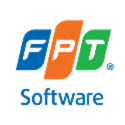The Benefits of Unifying Digital Experiences
Unifying your customer and employee digital content management and personalization under one roof will produce a competitive advantage.

All businesses rely on technology to manage interactions with customers as well as their internal operations. A fundamental part of this digital strategy involves leveraging a content management system (CMS), or more effectively a full experience platform (XP), as a system of record for content and content personalization. Businesses often view an XP as just a tool for their websites or customer-facing digital platforms, but it’s equally important for managing internal communications and operations.
A Unified XP Creates Omnichannel Consistency
Imagine receiving an advertisement in your email from your favorite store. It’s a deal too good to turn down, so you rush to the store and load up your cart. At checkout, you proudly proclaim, “I have this promotion for 50% off.” An employee checks on it and replies, “I’m sorry I don’t know what promotion you’re referring to.” You were once a loyal customer but now feel a victim of misleading advertising. This scenario can happen when external and internal communications and systems are not aligned. Misalignment can be a people problem rather than a technological problem, but technology exists to assist the business to run better, so it’s critical to understand the best way to leverage it.
Siloed and Deadly
It’s common for businesses to run internal and external communications on two separate systems, and often owned by different teams. Marketing often owns the channels for B2C or B2B messaging and brand management. The communications department or HR may manage the channel for employee messaging via a corporate intranet. By siloing communications in this way, content must be managed in two places. This duplication creates extra work, but it also means when content is changed in one place, it may be overlooked in another. By leveraging a single XP, content can be universally managed across the business reducing this risk of misalignment.
Information silos can severely hinder business operations, causing confusion, customer churn, and missed opportunities. For instance, if customer service is unaware of product updates, they might misinform customers. Using separate platforms for customers and employees exacerbates these silos. Consolidating to a single platform enhances internal communication, leading to smoother, more efficient operations. This agility helps businesses respond quickly to new challenges and opportunities, maintaining customer satisfaction and competitive advantage.
Personalization is Powerful for All Audiences
Personalization is a marketing strategy of delivering content tailored to match a target audiences’ behaviors, context, or desires. In marketing circles, personalization is generally recognized as a potent tool in stimulating customer loyalty. When a customer feels seen and understood by a brand, it can drive deep customer engagement, both growing and protecting revenue streams long term.
Often overlooked, personalization doubles as a powerful tool for communication with employees. What’s often missed is the value and power of leveraging personalization techniques internally to deliver relevant content to employees and staff based on their role, function, seniority, and geographic location. Unifying your XP can empower personalization throughout your organization internally and externally.
My firm recently worked with a global quick service restaurant chain that had a difficult time ensuring food was prepared consistently in each of its thousands of stores. Their restaurants spanned over 100 countries and their employees and staff spoke over nine languages. Before they launched a new product, they had to ensure their marketing and training materials were universally distributed internally to each of their stores and staff was appropriately trained. The sheer scale of their business meant misalignment between corporate and franchisee was frequently a problem. At the start, their only ability to distribute content was to post it on their corporate intranet and ask staff to access it. To make matters worse, when someone wanted to find training material, they had to dig through information about completely unrelated topics meant for other types of employees. The hassle of finding timely and relevant information dissuaded staff from even trying.
The business successfully implemented a robust XP to manage their corporate brand website and developed an omnichannel communication platform for internal content. They utilized employee data to deliver targeted training and corporate messages in appropriate languages, thanks to the platform's localization features. This strategy, which displayed personalized content on staff portals, led to increased revenue, improved customer satisfaction, enhanced training, and compliance metrics.
Cost Efficiency Through Scale and Management
Likely the most obvious benefit of leveraging a single platform for your customer and employee experiences is that it can save your business money. Maintaining separate systems for managing customer and employee content can be expensive as each system might require different software, training, maintenance requirements, and licensing. By leveraging a single platform, a company can reduce these overhead costs significantly, making the management of digital content more cost-effective and allowing the company to allocate resources to other important areas.
To learn more about digital customer experience opportunities, visit fptsoftware.com.
About the Author
You May Also Like







